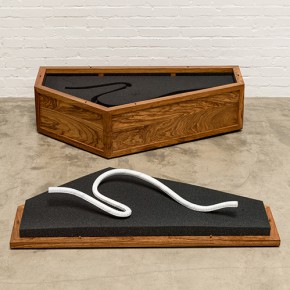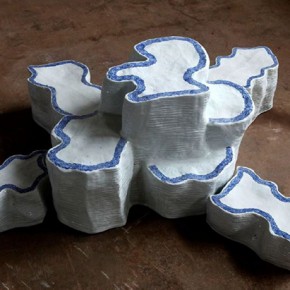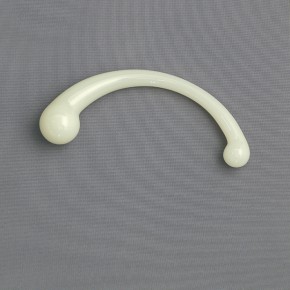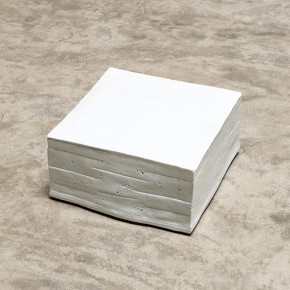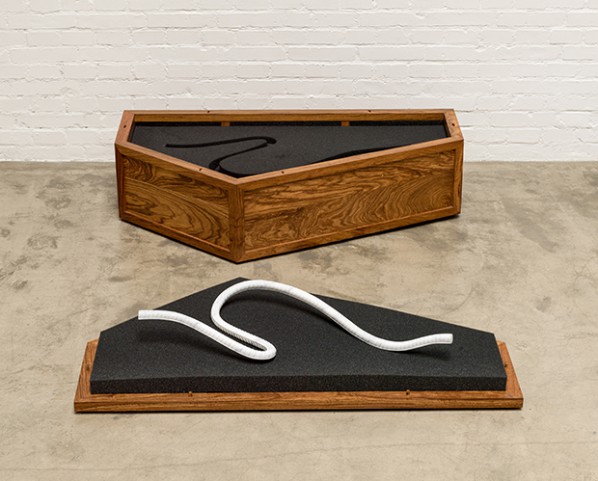
Chambers Fine Art is pleased to announce the opening of two concurrent exhibitions devoted to new and conceptually related earlier works by Ai Weiwei. Ai Weiwei: Part I will open at Chambers Fine Art on September 11, 2014. Ai Weiwei: Part II will open at Francis M. Naumann Fine Art on September 12, 2014. Still unable to leave China three years after his “conditional release” from 81 days detention from April 3 to June 22, 2011, Ai Weiwei has nevertheless been able to oversee the production of an important new body of work which has only contributed to his international fame. This year alone there have been major museum exhibitions at the Brooklyn Museum and the Martin Gropius Bau, Berlin. Curated by John Tancock, the two-part exhibition focuses on a group of new works at Chambers Fine Art and a selection of earlier works at Francis M. Naumann Fine Art that offers insights into the convergence of conceptual and politically engaged aspects of his practice.
Chambers Fine Art will be exhibiting for the first time Rebar Boxes I-VIII, the latest in a series of works that owe their origin to the 8.0 magnitude earthquake that struck Sichuan province, China on May 12, 2008. Increasingly outspoken on the political situation within China, Ai formed a Citizens’ Investigation to establish the names of the thousands of schoolchildren who had been killed in shoddily constructed schools in Wenchuan district. In addition to this activity, he purchased about 200 tonnes of twisted rebar salvaged from the destroyed buildings and used this in several large installations: Wenchuan Steel Rebar, first seen at the Joseph H. Hirshhorn Museum and Sculpture Garden, Washington D.C. in 2012; Forge at Mary Boone Gallery, New York in 2012; and Straight in Zuecca Project Space, Venice in 2013. Still haunted by the earthquake and its aftermath, Ai focuses on single pieces of twisted rebar in the new series of Rebar Boxes. Carved in marble, these faithful replicas of steel originals are housed in boxes made from huali wood, the precious material used in Chinese furniture of the Ming and Qing dynasties. Noting that he never really separates “art, architecture, design, and even curating”, Ai’s boxes are simultaneously abstract sculptures and containers for delicate marble forms that are heavily laden with meaning.
In complete contrast is a new series of small sculptures carved in jade, a material of particular cultural significance in traditional Chinese art. When Ai returned to China in 1993, he spent a great deal of time in the antique markets that sprung up during the period when so much archeological material was being unearthed, gaining considerable expertise in the process. Since jades were of particular fascination to him, it is not surprising that he should have decided to use this venerated substance himself in a new series of small jade sculptures. Despising any attempt to replicate or modernize traditional Chinese stylistic features, however, he transforms contemporary luxury products such as perfume bottles, cosmetic jars and sex toys into suavely beautiful abstract forms.
The selection of works at Francis M. Naumann Fine Art ranges in date from 1986 to 2014. The earliest work Hanging Man (1986), a wire clothes hanger bent into the profile of Marcel Duchamp, reveals the young artist’s enthusiasm for the artist who was to influence him in many ways, notably in the use of the readymade and in his attitude to figures of authority, whether political or artistic. The attitude to symbols of power so liberally dispersed in the photographic series Study of Perspective (1995 – 2011) became increasingly personal as Ai’s confrontation with the authorities reached a climax in 2011. The 2009 photograph Illumination was the first major skirmish in the series of events that led to his 81 day detention in an unknown location in 2011.
Occupying the center of the gallery and exhibited for the first time is the maquette for one of the six dioramas constituting S.A.C.R.E.D., the meticulous presentation of Ai’s extended captivity. Relying on his extraordinary visual memory, Ai supervised the recreation of his humiliating daily routines down to the smallest detail. This privileged glimpse behind the scenes offers a moving insight into the circumstances behind the creation of recent works such as the pair of handcuffs carved in huali wood, a means of detention recreated in a precious material.
Other recent works such as Forever Duo (2013), a spare presentation of the bicycles that first appeared in his oeuvre in 2003 and a trio of Han dynasty vases dipped in metallic automobile paint (2014) for the important exhibition at Martin Gropius Bau, Berlin, attest to the way in which insights first offered by Duchamp continue to inspire creative transformations in Ai’s multi-faceted practice.




